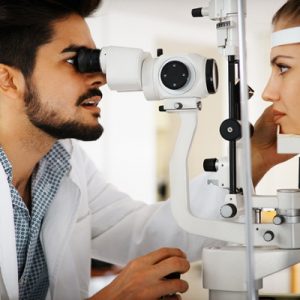Most people, when asked, admit that they aren’t contact lens compliant, putting their eyes at risk for complications.
Contact lens materials and care techniques can provide incredible all-day comfort. However, wearing contact lenses is not without risk.
Compliance is defined as following your eye doctor’s instructions regarding your contacts lenses, including hours worn per day, when to dispose them and cleaning regimes.
Research shows a large disconnect exists between perceived and actual compliance exhibited by contact lens users.
Around 85% of patients say they follow their eye doctor’s instructions, but upon further investigation, the reality is somewhere closer to 50% achieving true compliance.
People who don’t maintain their lenses correctly, who wear their contacts longer than recommended, or who don’t replace them as prescribed, are at risk of developing eye problems.
Why is compliance important?
Your eye doctor will take the time to answer all your questions regarding contact lenses and provide you with a complete guide to ensure you can enjoy the benefits of your lenses.
However when these instructions are not complied with, a range of complications can arise:
1. Oxygen deprivation
When it comes to contact lens difficulties, it’s important to think about oxygen – the cornea gets its oxygen from the tears, and the contact lens is a barrier to the oxygen flow.
Simply put, even the best-fitting contact lens comprises the cornea’s oxygen supply.
When a contact lens is in the eye, less oxygen reaches the cornea – leading to oxygen deprivation complications.
When the eye receives too little oxygen over the long term, it becomes less sensitive to pain and discomfort.
That’s problematic, because patients may not notice that their lenses are scratching their corneas, which, untreated, can lead to vision loss.
When the cornea is deprived of oxygen – often gradually – it can result in several problems.
Contact an eye doctor near you who can guide you on proper contact lens care.
SEE RELATED: Contact Lenses: Top 10 Myths and Facts
2. Abnormal blood vessel growth
The cornea is a fully transparent tissue with no blood veins in a normal eye.
Blood vessels from the surrounding tissues can grow into the cornea, if the cornea is deprived of enough oxygen for an extended period of time.
Left untreated, blood vessels can grow deeper into the cornea, obstructing vision.
The cornea is “crying out” for oxygen, and the body’s natural response is to send blood vessels to the rescue.
The goal of these new blood vessels is to provide fresh oxygen to the corneal tissue that has been starved of it.
These vessels are permanent and will persist even if contact lenses are removed. As a result, stopping their growth is critical.
3. Surface cell problems
Another negative result of decreased oxygen delivery is its affect on cornea’s epithelial cells on the cornea’s surface.
They can swell and weaken their tight attachment to the cornea over time, causing holes in the cornea’s protective surface.
Bacteria can enter through these openings and cause infection. An abrasion or worse, a corneal ulcer, can emerge if too many epithelial cells slough off.
We now understand that when the oxygen supply to the cornea is limited, bacteria can adhere to the epithelial cells. Bacterial binding is more difficult to achieve in healthy, well-oxygenated epithelial cells. When bacteria adhere to surface cells, they are obviously in a position to infect them.
Fortunately, wearing contact lenses for the amount of time recommended by the manufacturer and your eye doctor can prevent these problems.
To replenish your eye’s oxygen supply, switch to glasses when you can. Wearing contacts for the entirety of your waking hours is not recommended.
4. Disposing of lenses
It’s all about oxygen when it comes to properly disposing of your contact lenses after a specified wearing duration, whether it’s daily, two weeks or one month.
The amount of oxygen going through to the cornea is at its highest when a new lens is placed on the cornea.
As the lens is worn and becomes covered with tear proteins, debris, and cosmetics, the oxygen levels in the cornea begin to decrease.
Unfortunately, some patients continue to use their contact lenses much past the point of safety. They falsely feel that nothing is wrong because they don’t have any symptoms.
Don’t be fooled into thinking this way, your corneal health is dependent on complying with your eye doctor’s advice and instructions.
Visit your eye doctor
Your doctor will examine your corneas to ensure that none of the issues we’ve discussed are present. Follow your doctor’s advice for when to replace your lenses and to come for check-ups.
If your eye hurts, becomes red, or your vision is blurred, contact your eye doctor without delay.
Schedule an appointment with an eye doctor near you to make sure your eyes are getting the amount of oxygen they need.
LEARN MORE: Guide to Contact Lenses
Complying with your eye doctor’s advice is essential to keep your corneas healthy and ensure that you have many years of trouble-free clear vision with your contact lenses.










